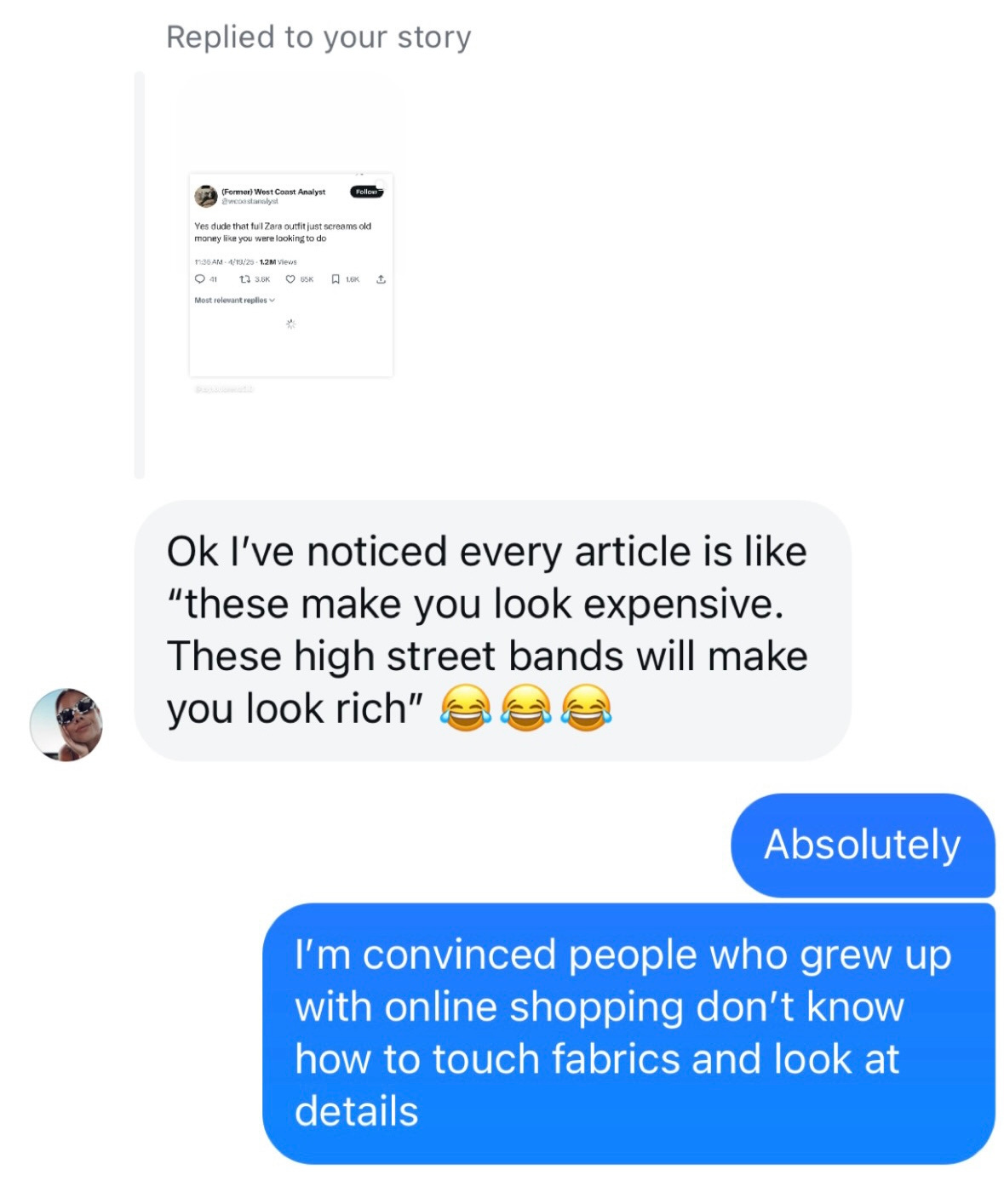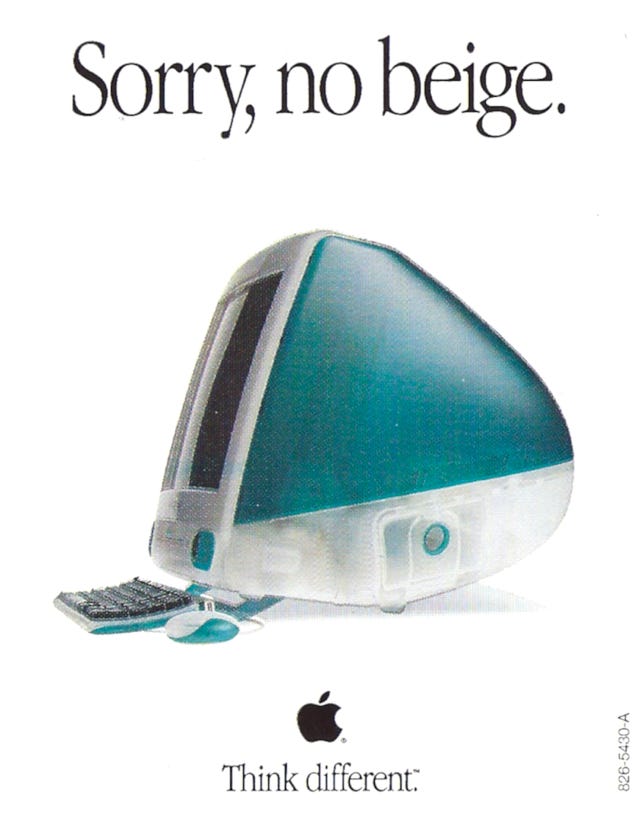Hiiii. I'm switching to a new send time: Wednesdays. 1pm Paris-time.
Monday issues often get buried in busy start-of-week inboxes. I don’t think I’m the majority in thinking about send times but my 9-5 also consists in sending a newsletter. It’s sent at 2.30pm on a Friday which is justified by its content: it’s business-y but also bringing novel ideas weekly so readers like to consume it at a time where they’re less likely to be in-between meetings.
Lmk if you like this midweek timing for Oblique Forecasting, if it fits in your reading routine or if you don’t think it matters at all.
We’re only in Q2 of 2025 but a few of our group-sourced predictions have already proven true:
Brands return to spending proper money on world-building rather than on influencer marketing > I’m writing a piece on digital-first companies who invest in print!
A religious revival is brewing > Looks like nearly 50% of Gen Zers in the UK are returning to God.
This week, I’m focusing on Taste Economy. A renewed emphasis on careful human curation and taste as a reaction to the dictature of the algorithm.
xoxo Esther 💋
💰 What I’m investing in
🔍 Taste economy 2.0
Taste has a few definitions but let’s address the fact that the word bears somewhat conflicting meanings:
the sensation of flavour perceived in the mouth and throat on contact with a substance1.
a person's liking for particular flavours.
the ability to discern what is of good quality or of a high aesthetic standard.
Definition 2 and 3 matter here. On the one hand, there’s what you like. On the other, there’s what society deems acceptable to like. What we crave versus a trained ability to recognize quality and value.
Something has shifted in the economy of taste.
1. Everything is available and nothing is important
Culture used to be shaped by scarcity. You would own a few books and maybe borrow from the library. You’d save up for a CD. A film you had to catch in the cinema or miss forever.
Now, everything is available to everyone all the time. Infinite playlists, infinite rewatches, infinite recommendations.
Cultural impact has been flattened. We no longer have generation-defining albums or novels, only personal algorithms and private feeds.
Discovery has become circular: the algorithm serves what’s most likely to be liked, which makes it more liked, which makes it more shown.
2. Taste was always a class marker
Let’s be honest: good taste has long been a proxy for class.
The ability to know what’s stylish, what’s refined, what’s just enough (i.e. Coco Chanel’s famous quip “Before you leave the house, look in the mirror and remove one accessory.”) often depends on having the time, money, and exposure to learn those cues.
Minimalism, farm-to-table dining, Pilates bodies. All these aesthetics rely on wealth disguised as restraint.
We strive for quiet luxury and mock loud logos, without acknowledging that both require resources. The tasteful elite rarely announce themselves, because they’ve trained us to see their subtle codes as superior.

3. Can everyone be a creative director? And should everyone want to be a creative director?
Social media taught us all to curate. We stage, frame, filter, and post.
Everyone is a creative director, a moodboarder, a part-time tastemaker nowadays.
But if everyone’s taste is aesthetically literate, is taste still a differentiator or just a default skill?
Figures like Rick Rubin embody this shift: not technical experts, but vibes guys. They’re spiritual tastemakers who feel rather than judge.
4. What now?
For you. The challenge is to step off the algorithmic carousel. To pause and build a personal sense of taste that isn’t just a mirror of what's trending.
That means going back to the source: reading before reviews, listening before playlists, watching before trailers. Letting intuition sharpen through friction.
Taste, at its best, is a process of attention.
For brands. The opportunity lies in resisting the visual monoculture of good taste and cultivating a distinct point of view.
Not just another earth-toned identity kit, but a story, a worldview. Something specific enough to repel as well as attract. Don’t be scared of tackiness!
📈 Bullish news
Markets cheered the new trade pact between the U.S. and U.K. But U.K. imports will continue to carry a 10% tariff, up from a pre-Trump average of 1.3%. Trump referred to that as the "lowest end" import tax. [Axios]
The High-School Juniors With $70,000-a-Year Job Offers [WSJ]
Gen Z are leading the charge in the subscription economy, with 90% of 18-25-year-olds having at least one subscription and spending an average of £305 per month, triple the spend of Gen X. [The Times]
How M.L.M. world works on Instagram and TikTok [Read Max]
Gen Z's new side hustle: selling data [Axios]. 88% of Gen Z is open to sharing personal information with social media companies, 20 points higher than older generations.
Warby Parker Reaches Full Profitability [BOF]. Finally.
📉 Bearish news
Ad spend goes down [Axios]
What Does Trump’s Insane “100% Tariff” on “Foreign Movies” Even Mean? [Vanity Fair]
The share of those talking about uncertainty on the workplace review site Glassdoor is up 80% from last year [Glassdoor]
Wall Street year-end bonuses are overall projected to fall by a modest amount of between 5% to 10% [Axios]
These young people see meme coins as their best shot at the American Dream [WaPo]
De Beers is closing its lab-grown diamond business [Bloomberg].
If you’re looking for me, here’s my Instagram and my Sicilian house’s Insta. Here’s my LinkedIn. Choose wisely, or don’t.
We’re not going to focus on tastebuds and what happens when you eat today :)











